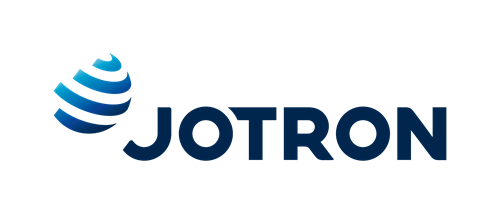For Air Traffic Trainees, Games With a Serious Purpose
The air traffic control tower at Academy Airport here offers a panoramic view of the runways, the terminal, the three windsocks and, off in the distance, the outlines of downtowns biggest buildings.
That is just as well because, every once in a while, a controller being trained in this virtual tower at the Federal Aviation Administration Academy makes a mistake and planes collide. They erupt in a fireball that burns for several minutes, until it is time for a new simulation.
My students will never have a better opportunity to run two airplanes together than they do here, said Terry Harrington, who teaches radar control techniques.
In Mr. Harringtons class, students practice with simulated airplanes in real airspace, about 10,000 square miles of sky above Mississippi and Louisiana.
The sophisticated video games are meant to address a serious real-world problem: Nearly two-thirds of the agencys 15,000 air traffic controllers will no longer be working by 2017 when they reach the mandatory retirement age of 56.
That is no coincidence. Controllers were hired by the thousands in the early 1980s after their predecessors went on strike and were fired by President Ronald Reagan. The result was a demographic blip that for years relieved the F.A.A. of doing much hiring and training only a few hundred a year for most of the last decade. In one recent 12-month period, only 13 were hired.
As a result, the agency now must hire and train some 1,700 controllers a year for the next decade, a task the Government Accountability Office described as a major challenge. Experts say that having a high proportion of trainees and rookies in towers and radar rooms may reduce safety. To meet the challenges, the agency is turning to electronic tower simulators, which one instructor described as a big Xbox.
Officials say they are hoping that the use of the simulators will cut training time 20 percent to 60 percent. Training costs average $74,000 a controller but vary widely, being higher for the busiest, most complex airports.
The agency has used simulators for radar training for years, but it recently began installing simulators for control towers. OHare International Airport in Chicago has one, and others will be scattered around the country.
At the academy, six simulators run about 18 hours a day, but the F.A.A. also continues to use its old training method, built around a plywood airport model on a table in the middle of a classroom.
Trainees simulate flights by carrying model planes around the room and following instructions from a controller. Masking tape on the floor, marked with handwritten numbers, represent miles from the end of the runway.
Students take readily to the computerized training. Byron Hull, who manages training for the Air Route Traffic Control Centers, refers to the computer savvy of the new recruits as knobology, a neologism that describes the students ability to relate instrument controls to their function. In the future, experts predict, controllers will use more computer tools to handle more flights each shift.
The tower simulation is realistic. Aircraft first appear as tiny dots against blue sky, clouds or stars. On the ground, drivers of maintenance trucks ask permission to cross a runway so they can fix a lighted sign. A click of the instructors mouse can shift the time of day, and change the weather from rain to hail or cloudy to clear. To make the simulations as unpredictable as in the real world, some pilots ignore instructions.
Still, the simulators have some drawbacks, said Craig Carlson, co-director of the Air Traffic Control Program at the University of North Dakota.
Students know its not real, Mr. Carlson said, and when they begin their apprenticeships after weeks on a simulator they have to shift gears because theyve been kind of desensitized to the fact theyre actually dealing with real traffic.
Training at the academy is labor-intensive. Instructors outnumber students and teach them to think through three-dimensional problems and to use so-called short responses to speed communication, like hold short, to tell a pilot to wait before crossing a runway, for example.
Its like learning a whole different language, said Marisella Powell, 23, who is training as a tower controller after four years as a controller in the Air Force.
The aviation agencys terminology and procedures differ from the militarys. The computer that runs Ms. Powells simulator has voice recognition but responds only to official phrases.
Once you know it, it just becomes second nature, Ms. Powell said. You start to say it at home, to tell your kids to stand by, unable, hold short. Ive done say again on numerous occasions.
Students are paid the equivalent of $19,000 a year, plus $79.20 a day in living expenses, for their time here, which includes 65 days of classroom instruction. As apprentices in towers or radar rooms after graduation, they earn in the mid-$30,000 range, depending on location, until they are qualified. Over time, they can earn more than $100,000 a year.
The screening process for candidates has gone high-tech, too. In the 1990s the F.A.A. developed a six-hour computerized aptitude test that it refines from time to time. Recruits must answer geometry questions and solve math problems in their heads for example, if a plane travels a certain number of miles in 90 minutes, what is its groundspeed, in miles per hour?
Then come game-like tests, designed by psychologists. In one, a bit like Tetris or Frogger, three parallel belts, running at different speeds, drop colored letters toward the bottom of the screen. The test-taker must try to grab each letter before it drops, and put it in a bin of the appropriate color. The player also has to drag the bins into place, and when the supply runs low, order more bins.
The hard part comes when the screen disappears and the computer asks questions like: How many bins were in use? How full were they? What letters were still on the belts?
Scoring well on the test is supposed to reveal the qualities that make a good air traffic controller, including the ability to work under pressure and maintain situational awareness.
Another game simulates actual air traffic. A screen shows a box that holds two airports, each with a single runway, useable in a single direction. The box also has four exits. Planes appear randomly, each bound for an airport or an exit.
The controller must assign the planes a speed, an altitude and a heading. The planes are allowed to exit only at high altitude, and to land only from low altitude and low speed.
When the game ends, the computer calculates how long the planes flew compared to a theoretical minimum, how many made it through the correct gates, how many crashed into the walls at the edges of the box and how many were directed too close to one another.
The test is intended to measure short-term and long-term memory, thinking ahead, multitasking, flexibility, tolerance for interruptions, and composure.
Academy students are also given a hyperactive version of Pac-Man to play in their spare time. The idea is to keep students skills sharp, instructors say, and hone their ability to watch several targets at a time.




.jpg)

.png)


Comments
There are no comments yet for this item
Join the discussion